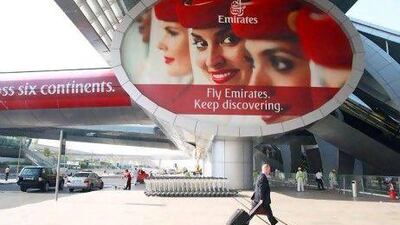One of the most difficult things to explain in the airline business is the runaway success of Emirates Airline.
Industry Insights: More premium business content offered by The National
Last Updated: May 19, 2011
UAE pioneers lead a quiet revolution across continents The axis between Africa, the Middle East and Asia will create some of the most interesting business ventures of the coming decades. Read article
3D or not 3D, that is the question There are growing doubts as to whether 3D blockbusters can save Hollywood. Read article
Sony hurt by response to PlayStation Network hacking Sony has fallen into the same trap as Toyota and left their customers fuming. Read article
Mud-slinging over rare earth China could soon face stiff competition in the lucrative rare earth metals market. Read article
At a time when the developed world is still reeling from the global downturn, the airline made US$1.5 billion (Dh5.5bn) in profits for the past financial year.
How did it do this when Middle East airlines overall were forecast to collectively make only $700 million? And how did it manage this feat when the other large Gulf carriers have not publicly disclosed any annual profits?
There are many reasons for its success.
One important factor is that, despite all the economic doom and gloom globally, last year was actually a vintage year for airlines.
As confidence returned, pent-up demand that accumulated in the crisis years was unleashed, leading to a big jump in volumes of freight and passengers.
Airlines worldwide delivered profits of $16bn, a huge swing from the $9.4bn in losses estimated for 2009, according to the International Air Transport Association.
And when you are as big as Emirates, which boasts 151 wide-bodied aircraft flying to 111 cities, you are a big boat well placed to be lifted by a rising economic tide.
Emirates is also innovative and wins customer loyalty for the quality of its in-flight comforts and services, and its premium lounges.
Other big international airlines that compare with Emirates in terms of capacity, quality of service and network also fared well. Lufthansa made a €1.1bn (Dh5.76bn) profit last year, while Singapore Airlines produced net income of S$1.1bn (Dh3.25bn).
These are all well-established, mature businesses that are products and beneficiaries of our increasingly connected planet.
Emirates has been around since 1985 and kicked its growth into high gear a decade ago, buying long-haul Boeing 777s and Airbus A380s by the dozen.
By contrast, many of the other Gulf carriers are much younger, and thus still developing their networks to provide the kind of frequency and connectivity required for a profit windfall.
As later entrants to the market, they are also playing a sort of catch-up with Emirates, which has spent heavily promoting itself through sports sponsorships.
In a tribute to its marketing efforts, one Emirates executive says the carrier is popular because it is considered a global company and "not a Middle East airline".
When it comes to Emirates's advantages, an important element is location.
It was the first airline to realise that the Middle East, at the crossroads of continents, was a great place to base a global carrier.
The strategy is to fly to large and medium-sized cities on six continents and optimise transfer traffic. That creates "city pairs" to carry passengers via a single stopover in Dubai, faster and with fewer stopovers than European or Asian airlines.
If a Chinese businessman wants to go to Africa, an Indian national wants to visit family members in Canada, or a French family is planning a holiday in Thailand, there is a decent chance they will choose a Gulf airline.
Another advantage is Dubai. In the Dubai/Sharjah metropolitan area, Emirates can rely on a dynamic home market to draw traders, tourists and business travellers.
But not all of Emirates's profits are from passengers and freight. The airline actually has two dozen subsidiary companies including cafes, hotels and food and beverage distributors that contribute nearly 10 per cent of profits - or for last year, nearly $150m.
Many are monopolies, such as its catering unit, which provides meals for all airlines at Dubai International Airport. By contrast, these lucrative services are run by airport operators, not the flag carrier, at other Gulf hubs.
However, most of its profits comes from airline operations. The UAE is also a low-cost centre in the airline world, thanks to its cheap, imported labour and the absence of corporate taxes.
The airline has some of the biggest planes in the market and flies them a long way. That is ideal for a carrier as it lowers costs, and Emirates has some of the lowest unit costs in the business.
There are other advantages, including access to finance through export credit-backed deals that European airlines were barred from accessing for many years.
Then there is the commitment of the Dubai Government to do everything in its power to help Emirates succeed, including the building of billion-dollar terminals solely for the airline and allowing flights through the night.
This year may be tougher for Emirates, as jet fuel prices remain high, regional unrest continues and demand for air travel worldwide is expected to slow down.
But there is still a large part of the globe that remains unconquered for Emirates.
Royal Bank of Scotland concluded in a recent report that it was "surprisingly easy" to identify viable routes for the 90 new A380 superjumbos that Emirates already has on order.

